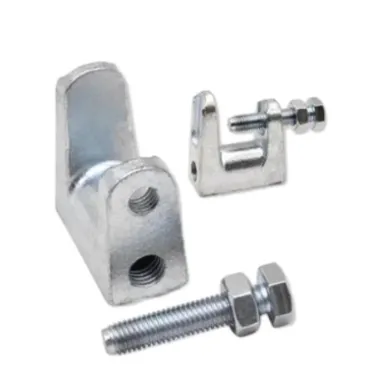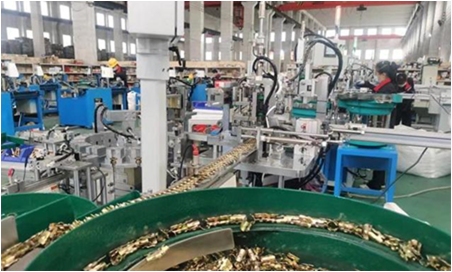Jan . 29, 2025 04:09 Back to list
different types of foundation bolts
Choosing the right foundation bolts is critical to securing stability and safety in any construction or machinery installation project. Foundation bolts come in various types, each designed to meet specific requirements and tolerances. Understanding these differences can greatly enhance the functionality and longevity of a structure or machine.
Swedged bolts are engineered for extreme precision and are used in specialized construction projects requiring high degrees of alignment accuracy. These bolts are generally used in applications subject to dynamic load changes, such as in seismic zones or in installations experiencing frequent vibration and movement. The swedging process, which involves deforming the bolt end to engage with a corresponding anchor, enhances the bolt's grip and load distribution capabilities. 5. Sleeve Anchors Sleeve anchors are particularly beneficial for applications requiring post-installation adjustments. They are primarily used in areas where drilling accuracy might be challenged, such as retrofit applications in older structures. Their design allows for easy installation and reliable performance in diverse materials, from brick and concrete to softer substrates. Key Material Considerations Foundation bolts are generally made from materials like stainless steel, carbon steel, and sometimes high-strength alloys. Each material offers distinct advantages concerning load bearing, corrosion resistance, and environmental stressors. - Stainless Steel Ideal for corrosive environments, providing longevity and low maintenance. Suitable for coastal applications or chemical facilities. - Carbon Steel Preferred for its strength and ductility, making it apt for applications under substantial mechanical stress. Expertise in Installation Proper installation is vital and requires specialized knowledge to ensure the full potential of foundation bolts is realized. It's crucial to consider factors like the depth of embedment, the curing time of the concrete, and the torque applied to ensure optimal performance levels. Consulting with structural engineers and adhering to manufacturer guidelines can prevent failures and enhance structural safety. Conclusion Selecting the appropriate type of foundation bolt is not just about meeting a project's immediate requirements; it involves considering long-term environmental and load-bearing factors to ensure structural integrity over time. Leveraging a deep understanding of each type's strengths and weaknesses - along with expert installation practices - are key to achieving resilient, permanent installations. By doing so, overall safety is reinforced, promoting trust and confidence in a structure's reliability and performance.


Swedged bolts are engineered for extreme precision and are used in specialized construction projects requiring high degrees of alignment accuracy. These bolts are generally used in applications subject to dynamic load changes, such as in seismic zones or in installations experiencing frequent vibration and movement. The swedging process, which involves deforming the bolt end to engage with a corresponding anchor, enhances the bolt's grip and load distribution capabilities. 5. Sleeve Anchors Sleeve anchors are particularly beneficial for applications requiring post-installation adjustments. They are primarily used in areas where drilling accuracy might be challenged, such as retrofit applications in older structures. Their design allows for easy installation and reliable performance in diverse materials, from brick and concrete to softer substrates. Key Material Considerations Foundation bolts are generally made from materials like stainless steel, carbon steel, and sometimes high-strength alloys. Each material offers distinct advantages concerning load bearing, corrosion resistance, and environmental stressors. - Stainless Steel Ideal for corrosive environments, providing longevity and low maintenance. Suitable for coastal applications or chemical facilities. - Carbon Steel Preferred for its strength and ductility, making it apt for applications under substantial mechanical stress. Expertise in Installation Proper installation is vital and requires specialized knowledge to ensure the full potential of foundation bolts is realized. It's crucial to consider factors like the depth of embedment, the curing time of the concrete, and the torque applied to ensure optimal performance levels. Consulting with structural engineers and adhering to manufacturer guidelines can prevent failures and enhance structural safety. Conclusion Selecting the appropriate type of foundation bolt is not just about meeting a project's immediate requirements; it involves considering long-term environmental and load-bearing factors to ensure structural integrity over time. Leveraging a deep understanding of each type's strengths and weaknesses - along with expert installation practices - are key to achieving resilient, permanent installations. By doing so, overall safety is reinforced, promoting trust and confidence in a structure's reliability and performance.
Latest news
-
The Ubiquitous Reach of DIN934 in Application Realms
NewsMay.16,2025
-
Exploring Different Bolt Types
NewsMay.16,2025
-
Cracking the Code of Sleeve Anchor Mastery
NewsMay.16,2025
-
Clamp Design Principles,Types and Innovations
NewsMay.16,2025
-
Artistry Inspired by the Humble Anchor Bolt
NewsMay.16,2025
-
A Deep Dive into Screw Types
NewsMay.16,2025


